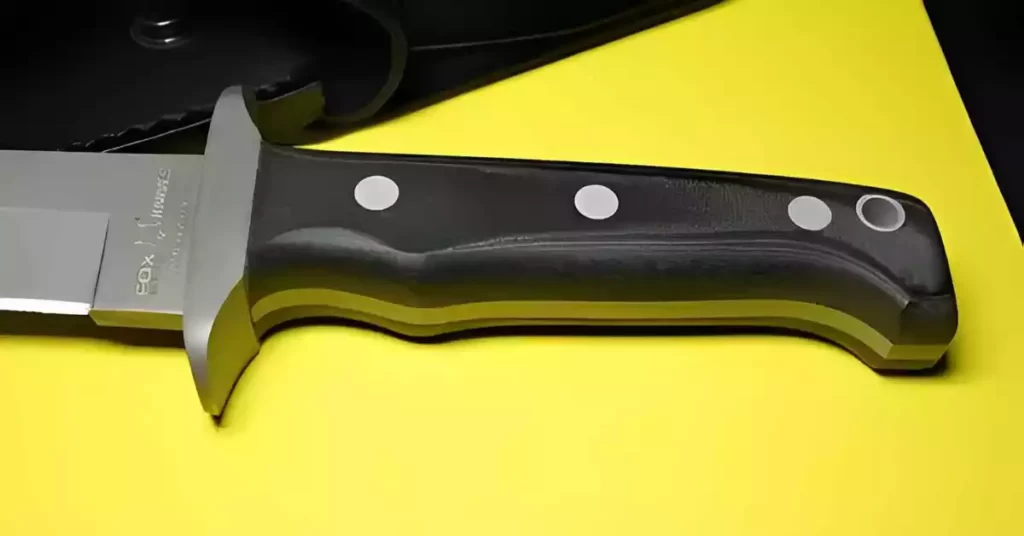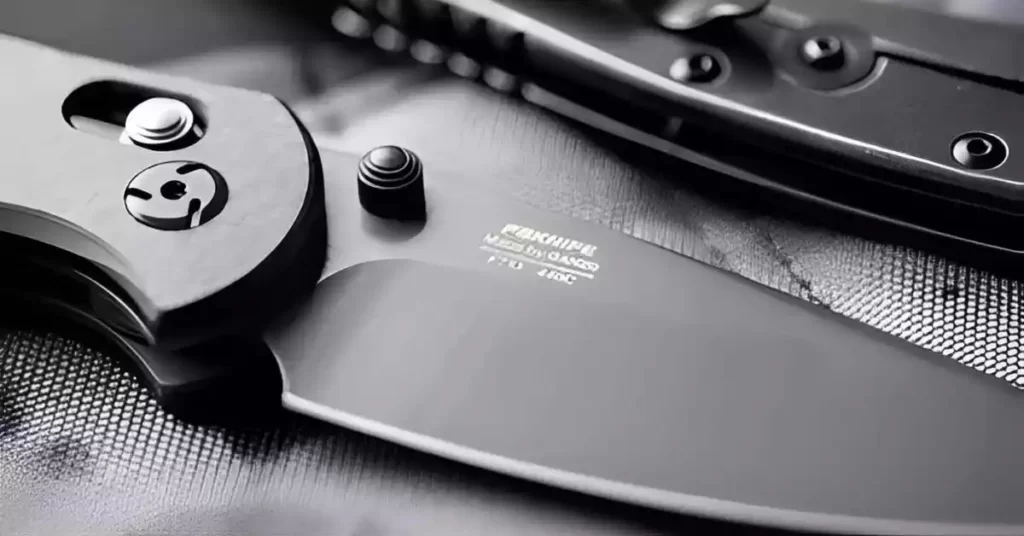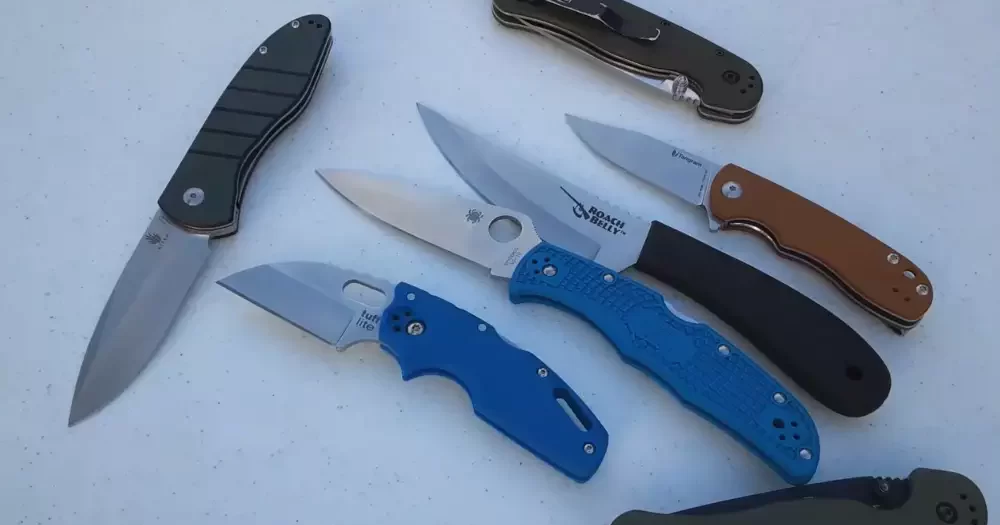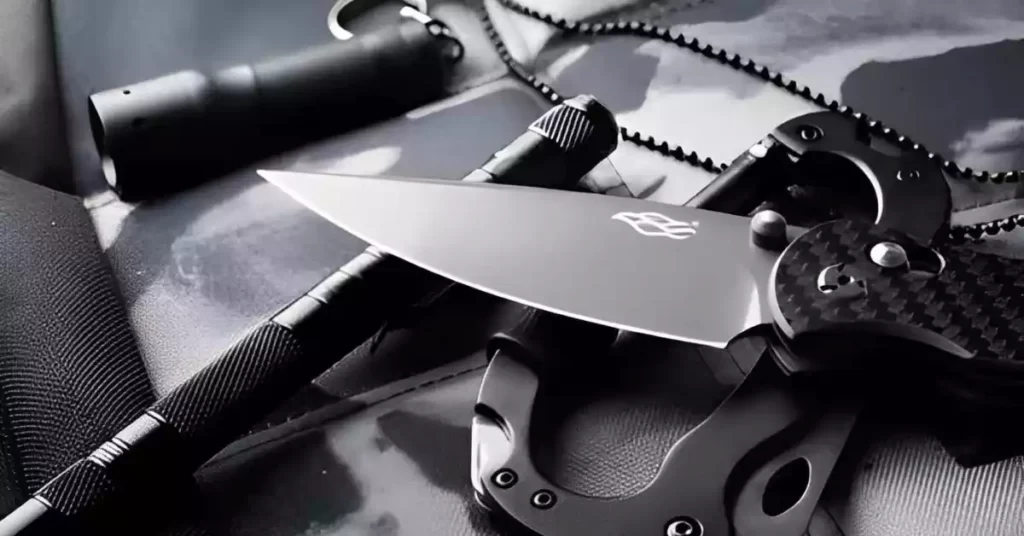Knives are ubiquitous tools with countless applications. However, all knives are not created equal, and the steel used in their construction significantly influences their performance. Two popular types of knife steel are 8Cr13MoV and 440C.
8Cr13MoV and 440C steel are commonly used materials for knife blades. They offer diverse characteristics that impact their usability and performance in various contexts. While one might excel in terms of hardness, the other might outperform in corrosion resistance or affordability.
These two types of steel, although similar in many respects, have distinct differences. Understanding these differences can help you make informed decisions when choosing a knife that will best meet your needs.
What is Knife Steel?
Knife steel is the backbone of any knife. It is the material from which the blade is made and significantly contributes to the knife’s performance, longevity, and efficiency. The type of steel used in a knife’s construction can impact its sharpness, durability, resistance to rust and corrosion, and overall functionality.
Importance of Choosing the Right Knife Steel
Selecting the right knife steel is critical. Different types of steel have unique properties that can significantly influence a knife’s performance. Some steels might hold an edge longer, while others may be easier to sharpen.
Some are more durable, while others are more prone to chipping or breaking. By understanding the characteristics of different steel types, you can choose a knife that best meets your needs and expectations.

440c: Composition and Properties
440c is a high-carbon stainless steel that is well-known for its excellent corrosion resistance, hardness, and edge retention. Its composition includes:
- Carbon (C): 0.95-1.20%
- Chromium (Cr): 16-18%
- Manganese (Mn): 1.00%
- Silicon (Si): 1.00%
- Molybdenum (Mo): 0.75%
- Phosphorus (P): 0.04%
- Sulfur (S): 0.03%
These elements contribute to 440c’s ability to maintain a sharp edge and resist wear, making it a popular choice for various cutting tools and applications.
Strengths of 440C
440C steel excels in hardness and edge retention. It is also quite resistant to corrosion, especially when properly cared for. Additionally, 440C is relatively easy to sharpen and provides a good balance of performance and cost.
Weaknesses of 440C
On the downside, 440C steel isn’t as tough as some other types of steel, meaning it might chip or break if used for heavy-duty tasks. Its high hardness also means it can be slightly more challenging to sharpen than softer steels.
Ideal Use Cases for 440C
440C is a good choice for a wide range of applications. It’s commonly found in hunting knives, kitchen knives, and EDC knives, where its excellent edge retention and corrosion resistance are highly valued.

8cr13mov: Composition and Properties
8cr13mov is a Chinese stainless steel that offers a good balance of performance and affordability. Its composition includes:
- Carbon (C): 0.80%
- Chromium (Cr): 13.00%
- Manganese (Mn): 1.00%
- Nickel (Ni): 0.25%
- Silicon (Si): 1.00%
- Molybdenum (Mo): 0.20%
- Vanadium (V): 0.10%
- Phosphorus (P): 0.04%
- Sulfur (S): 0.03%
8cr13mov is often compared to AUS-8, a Japanese stainless steel, due to their similar properties and performance.
Strengths of 8Cr13MoV
8Cr13MoV steel is known for its good balance of strength, toughness, and edge retention. It is also highly resistant to corrosion and is relatively easy to sharpen. Plus, it is quite affordable, making it a popular choice for budget-friendly knives.
Weaknesses of 8Cr13MoV
While 8Cr13MoV is a decent steel for the price, it does have some drawbacks. Its edge retention isn’t as high as that of more premium steels, and it can be prone to chipping under heavy use.
Ideal Use Cases for 8Cr13MoV
8Cr13MoV is a versatile steel suitable for a variety of applications. It is commonly used in everyday carry (EDC) knives, kitchen knives, and utility knives, where its good overall performance and affordability are highly appreciated.

440c vs 8cr13mov: A detailed comparison
Corrosion Resistance
Winner: 440c
When it comes to corrosion resistance, 440c has a slight edge over 8cr13mov. With a higher chromium content (16-18%), 440c offers better protection against rust and staining.
However, 8cr13mov still provides decent corrosion resistance, making it suitable for everyday use.
Edge Retention and Sharpness
Winner: 440c
In terms of edge retention and sharpness, 440c comes out ahead. Its higher carbon content (0.95-1.20%) and hardness contribute to a blade that maintains a sharp edge longer than 8cr13mov.
While 8cr13mov is still capable of holding an edge reasonably well, its performance is not on par with 440c.
Ease of Sharpening
Winner: 8cr13mov
8cr13mov steel is easier to sharpen due to its slightly lower hardness compared to 440c. This makes it more forgiving when it comes to honing and maintaining the blade’s edge.
While 440c can also be sharpened without too much difficulty, it may take a bit more effort to achieve the desired sharpness.
Toughness and Durability
Winner: 8cr13mov
Although 440c has better edge retention, 8cr13mov takes the lead in terms of toughness and durability.
The lower carbon content of 8cr13mov makes it less brittle than 440c, which means it’s more resistant to chipping and breaking under stress.
This makes 8cr13mov an excellent choice for applications where the blade may experience heavy use and abuse.

Price and Availability
Winner: 8cr13mov
8cr13mov is often more affordable and readily available than 440c. The Chinese origin of 8cr13mov contributes to its lower cost, making it an attractive option for those on a budget.
However, it’s essential to consider that the price difference may not always be significant, and the performance of 440c may justify the additional expense for some users.
8cr13mov vs 440c: Comparison Table
| Property | 440c | 8cr13mov |
| Corrosion Resistance | ✓ | |
| Edge Retention | ✓ | |
| Sharpness | ✓ | |
| Ease of Sharpening | ✓ | |
| Toughness | ✓ | |
| Durability | ✓ | |
| Price | ✓ | |
| Availability | ✓ |
Popular Knife Models
Both 440c and 8cr13mov are used in various popular knife models. Some examples include:
440c: Benchmade Griptilian, Boker Plus Urban Trapper, Spyderco Mule Team.
8cr13mov: Spyderco Tenacious, Kershaw Cryo, CRKT Drifter.
How to Choose between 8Cr13MoV and 440C
Choosing between 8Cr13MoV and 440C depends on several factors.
User Preference and Needs
If you prioritize sharpness and edge retention and don’t mind spending a bit more, 440C may be the better option. On the other hand, if you value durability, ease of sharpening, and affordability, 8Cr13MoV might be a better choice.
Consider Your Budget
If you’re on a tight budget, the more affordable 8Cr13MoV could be the best choice. However, if cost is less of a concern and you want superior edge retention and sharpness, 440C might be worth the extra expense.
Care and Maintenance
Both types of steel require regular care and maintenance to keep them in top condition. This includes regular sharpening, cleaning, and occasionally applying oil to prevent corrosion.
FAQs
Can 440c and 8cr13mov be used interchangeably?
While they have some similarities, their differences in properties make them better suited for specific applications.
It’s essential to consider the intended use of the knife and your specific requirements before choosing one over the other.
Is 440c better than 8cr13mov for kitchen knives?
It depends on your priorities. If you value edge retention and corrosion resistance, 440c might be a better choice.
However, if you prioritize ease of sharpening and toughness, 8cr13mov could be more suitable.
How do I maintain and care for a knife with a 440c or 8cr13mov blade?
Proper maintenance and care are crucial for prolonging the life of your knife, regardless of the steel type. Follow these steps to maintain and care for a 440c or 8cr13mov blade:
- Clean the blade regularly, especially after using it in wet or corrosive environments.
- Dry the blade thoroughly after cleaning to prevent moisture from causing rust or staining.
- Apply a light coat of oil to the blade to protect it from moisture and corrosion. Use a food-safe oil for kitchen knives.
- Sharpen the blade as needed, using an appropriate sharpening tool and technique for the steel type.
- Store the knife in a dry, cool place when not in use.
Which is better, 8Cr13MoV or 440C?
Neither steel is inherently “better” than the other. The best choice depends on your specific needs, preferences, and budget. 8Cr13MoV is generally more affordable and durable, while 440C offers superior sharpness and edge retention.
Final Verdict
The battle between 440c and 8cr13mov comes down to your specific needs and priorities. Both steels have their strengths and weaknesses, making them suitable for different applications.
If you’re looking for a steel with excellent edge retention, sharpness, and corrosion resistance, 440c is the winner. However, if toughness, durability, ease of sharpening, and affordability are more important to you, 8cr13mov is the way to go.
Ultimately, the choice between these two steels depends on the intended use of the knife and your personal preferences.
